What are the advantages of renting a trade show exhibit in Las Vegas?
Trade Show Exhibit Rentals Provide Better Long-Term Investment
- Ownership requires a long-term commitment.
- Variable recurring costs often increase quickly and for unexpected reasons.
- We provide fixed-cost published itemized pricing on over 40 customizable designs.
- Avoid high initial purchase costs.
- Keep a fresh look without being tied to an expensive, hard-to-sell exhibit.
The average 20×20 Double Deck purchase costs nearly $85,000. Increased steel and labor costs have significantly impacted fabrication. Freight and storage costs can easily total $15,000 a year. Show schedules are much tighter than they used to be, so set up is often at 20% straight time, an average of $150 hr to $250 hr., and more for double time. That’s the per-person cost with an average two-day setup with four people. After 3-5 years, when you’re ready for a new look, your exhibit is worth pennies on the dollar. 
Avoid variable and increasing recurring costs.
Our Turnkey Exhibit Rental Service provides a single pre-show invoice that includes the exhibit, graphics, transportation, labor, and a hefty chunk of show services management. The minimum cost to rent a TurKey Double Deck is about $24,320 for the 2020 deck design EL2020. The UC2020, is a popular double deck design in Las Vegas. At $36,840 with full graphics. These costs include transportation to and from the show, set up, and dismantling labor. The maximum cost for our largest Double Deck is about $250,000.
Costs include graphics as well. We provide easy-to-understand graphics, callout spec sheets, and pre-production proofs for your approval. Once your design is finalized, we will give a photorealistic rendering showing your graphics! We utilize several graphic materials, each ideally suited to the required application.

Fixed Cost Set Up, dismantle, and freight.
Ultimately, you receive discounted labor because that cost is established during the quoting process, even though trade show mandated set-up hours which may or may not be at straight-time hourly rates. This area is one of the largest sources of cost overruns.
What to expect when managing a double-deck exhibit – Lots of time and money
The time your staff spend managing your exhibit includes tasks that require extensive experience. As well, organizing the process is time-consuming. Exhibit Houses typically handle these things, but you are paying to engage a large staff over a long time period.
Double Decks often require a 4-person setup / $800 hr! When we have arrived at the final design that works best for you, you’ll know the exact dollar cost well before the show. We can intuitively understand your situation; whether you are a novice or a veteran in the trade show industry, we collaborate as if we are your own Trade Show Marketing Department. View additional information about how we work.
Your trade show marketing department – only when you need it
We specialize in renting Double Decks in Las Vegas and other areas. It’s what we do. TurnKey Service means just that. We start with the design process and establish your desired look and functionality. Generally, you’ll know exactly what your total cost will be at that point. There are no surprises!
We bill transportation and set up and dismantle labor on one pre-show invoice. 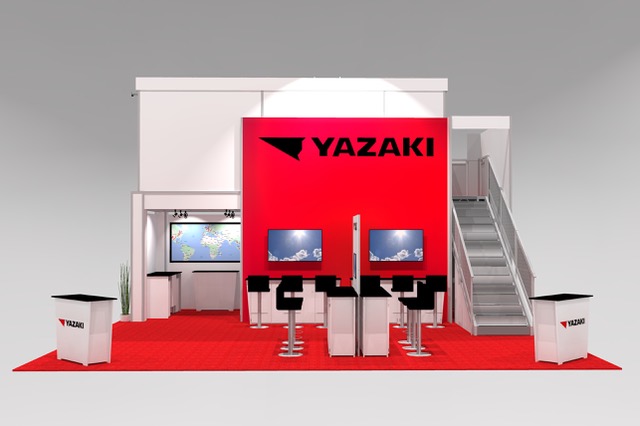
However, we assist in several ways during the production process. During the design process, we anticipate electrical requirements based on everything in your booth space. Some clients have specialized equipment or pre-existing exhibit properties that need to be combined in the same booth space.
We’ll provide a grid map with dimensions indicating your main electric drop and outlet locations throughout your booth space. We indicate how many amps are required in all areas. This is an essential show requirement! Nothing starts until the electric is down before the carpet is laid.
Part of that includes a booth orientation diagram that allows everyone involved to determine which direction is front by indicating adjacent booth space numbers. This is often dealt with early on because booth location often affects the design. Again, because we do this all the time, reviewing the Exhibitor Guide and viewing the trade show floor map is usually required early on.
Back to the basics
In addition to the cost time managing the process for each show, evaluating the cost of renting vs. ownership includes many factors. Key among them is storage and pre-show staging setup at an exhibit house. Generally, your exhibit is set up and taken down four times per show. After that, most exhibit houses bill for pre-show and post-show set-up at their facility to assess repair damages and ensure no surprises at the next show. It’s like setting up and dismantling labor three times for each show. So storage and management between shows can cost a lot of money, you save when renting.
Turnkey Trade Show Exhibit Rentals In Las Vegas Make Dollars And Sense!
When exhibitors use show labor, the required forms precisely specify set-up and dismantle times. We look at your target move-in date and establish that for you. We need to do that to ensure that your exhibit is complete and ready to go on the deadline. This touches on another cost many clients don’t need to consider—overtime vs. Straight time Union Labor billing. We provide a fixed cost invoice for set up and dismantling regardless of the show-mandated schedule. This is one of the most common areas of cost overruns. Labor rates are often over $200 per hour. Overtime is time and a half making it $300 hr.. Sometimes it can go to $200 hr. Multiply that x 3-4 set-up people; it can easily be over $500 hr. You don’t need to worry about that when working with TurnKey Trade Show Exhibit Rentals. Labor cost is fixed on one pre-show invoice.
Other Trade Show Services Management requirements
We provide the necessary EAC (Exhibitor Appointed Contract) forms and insurance certificates the show requires. This, along with accurate electric grid maps, relate to the fundamentals. If you need assistance with other show forms, we can help.
Space and height limitations. Double-deck exhibits usually require a minimum footprint of 20-by-20 feet and a 20-foot clear height, the vertical distance from the floor to the lowest underside point of the venue ceiling. Plus, most shows have maximum height restrictions based on booth size. For example, frequently, in-line booth space will have a maximum height restriction of 8 feet, and booths around the perimeter of the show hall are sometimes limited to 12 feet in height. Island and peninsula booths will also have height restrictions, usually between 16- to 30-foot maximums.
One of the most basic structural and safety concerns that your double deck has to meet involves weight capacity. You must ensure the structure can handle the load you intend to accommodate. For example, do you plan to host ten people in an upper-level conference room at a time, or might there be as many as 30 people on that upper deck at once?
Engineering Requirements for Double Decks
The engineering requirement for these structures is that they must withstand 100 to 125 pounds per square foot. While most systems easily meet this requirement, you’ll want to ensure that your double-deck provider understands the maximum number of people you intend to house on that upper level – and that the system is built to accommodate that load capacity.
The number of stairways required is another capacity-specific figure. You’ll usually need two stairways if you plan to have 10 people or more on the deck at one time, and some show halls require you to install a second staircase for any double decks that are 300 square feet or more.
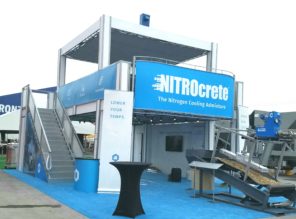
There are several safety and stability requirements for any double-deck structure. The key to meeting them is maintaining an open dialogue with the engineers constructing your system and ensuring they fully understand how you plan to use your structure.
The fire marshal reserves the right to do a flame test on any exposed surface on the show floor. Since no industry standard exists for double decks, exhibitors must investigate the double-deck regulations for each show they attend. It’s always in your best interest to develop a broad understanding of what is required.
Local building and fire codes require that double-deck systems meet or exceed the standard for all temporary structures. Each state and often each city and/or county has its own rules, to the point that some states require state-specific structural engineering stamps, and others mandate that exhibitors hire a 24-hour fire-watch official to stand in the exhibit.
Again, your exhibit provider must be held accountable for adhering to these codes. However, the exhibitor manual generally doesn’t include all of the local requirements. It’s your provider’s job to seek out local codes and regulations with each venue, county, city, and state in which you plan to exhibit.
Double-deck structures may require fire-suppression systems and/or smoke detectors and fire extinguishers. These requirements are based primarily on size. In many cities, any design larger than 1,000 square feet will require a sprinkler system. However, in some cities, such as Las Vegas, you can bypass this rule with a fire break (i.e., a bridge structure between double-deck sections) – thereby eliminating the need for sprinklers. This bridge concept works excellently for huge decks of more than 1,000 square feet, allowing you to design the segments so no contiguous unit is more than 1,000 square feet. And you cannot cover the top of a second story, as water from the venue sprinklers needs to reach the whole structure.
While numerous stipulations involve double-deck structures, a reputable provider can help you sidestep any associated issues. After all, a double deck is doubly effective for attracting attention and using vertical space in your booth.
EXHIBITOR online is the leading trade show information resource.
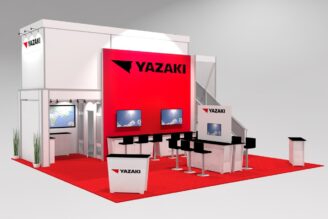
Owning vs. Renting A Trade Show Exhibit
Exhibit ownership is still the status quo, with 89 percent of exhibitors owning at least one structure and nearly a quarter of respondents holding five or more. On average, those exhibits are roughly four years old and travel to somewhere between five and ten trade shows per year. But with an average expected lifespan of about five years, many are ready for a bit of refurb. Almost six in 10 exhibit managers have refurbished an exhibit in the past, ranging from minor refurbs, such as updating graphics or exhibit elements, to major refurbs, like completely reskinning or reconfiguring an old booth. Regardless of the extent of those efforts, exhibitors found them worth the investment, with the majority extending the life of their structures by approximately one to four years.
For rental exhibits, three-quarters of marketers understand their benefits, but only about one-fifth have taken advantage of rental options in the past 12 months. Most renters prioritize criteria such as design, customization options, and price over floor plans, payment options, or vendor reputation when shopping for a rental. And while custom-rental options are a relatively new phenomenon in the industry, a near-majority are familiar with the heightened customization and lower upfront investment they afford exhibitors. At the same time, nearly one-third have considered custom rentals for their programs.
A trusted partner
Image Design and Communications, Inc. is a relationship-based company. During the process, we get to know you and understand your needs. We establish a relationship. That’s why our tagline reads “Building Relationships Through Design.ips Through Design.
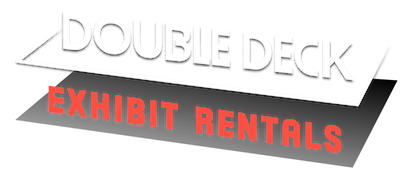
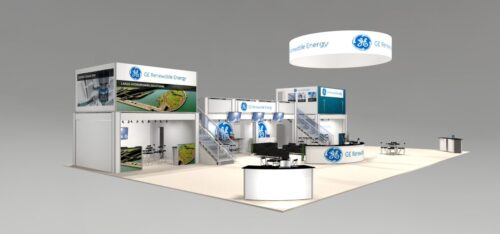
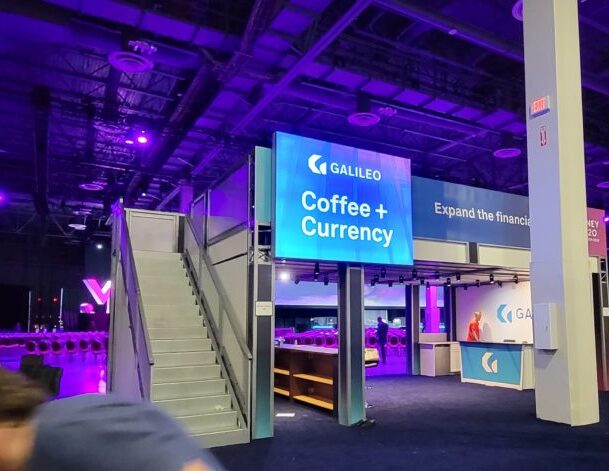
No Comment